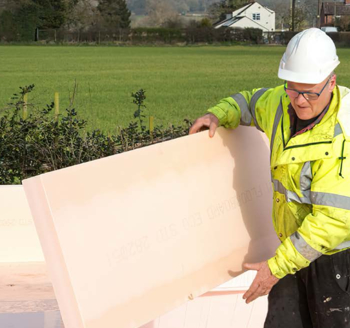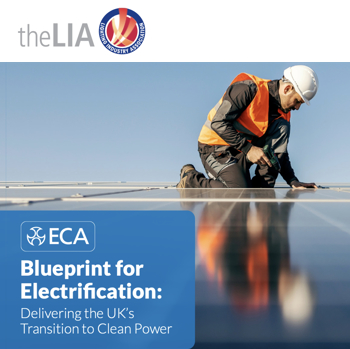The Future of Electricity in Domestic Buildings
by Andrew Williams --BRE 28 November 2014.
This paper reviews some of the key issues surrounding the supply, distribution and use of electricity in domestic buildings. Its primary aim is to consider the electricity system in a holistic, albeit simple, way and identify some of the inter-relationships and inevitable compromises that inherently arise.
By adopting a ‘horizontal’ system-wide review the hope is that the paper stimulates an integrated, system-wide debate surrounding how electricity in domestic buildings will evolve in the future. Only by doing this will electricity generation and consumption be harmonised with national targets and future consumer lifestyle need.
This paper is in response to a number of potentially significant changes in the production and consumption of electricity in domestic buildings, these include:
- Challenging CO2 reduction targets.
- The use of more intermittent renewable and inflexible nuclear generation.
- Smart meters and a potentially more dynamic electricity tariff structure.
- The growth in local generation through, for example, renewable energy installations.
- Electric vehicles and heat pumps.
- Changing appliance and device electricity demand profiles.
- Smart devices (controllable and Internet (IP) addressable).
- Alternative domestic networks.
- Conversion efficiencies.
- Electricity storage.
- Novel control scenarios.
The paper focuses on on-grid domestic buildings only and considers how the changing supply environment driven by the need to reduce carbon emissions and ensure security of supply will impact the domestic electricity installation and the consumer in the future. The paper questions whether there are alternatives to the existing 230 V AC domestic electricity system and, if so, how they compare today and how they might evolve to meet the future of electricity.
The paper breaks the electricity system down in to its component parts and by doing so attempts to disaggregate the functional performance of each part and identify its potential strength and weakness. Each component or building block can then be considered in the context of the existing 230 V AC electricity system or how it might work with any new solution or technology that may come along in the future. Also, by taking this approach new ideas or solutions that may have several distinct strands of technological or market benefit can be deconstructed to identify the parts that are backwards compatible with the existing 230 V electricity supply.
By taking a relatively holistic view the paper also brings into sharp focus the compromises that, like in any system, need to be made both in terms of technical performance, practical delivery and financial constraints. There are many apparently very justifiable reasons to optimise the domestic electricity system in the future not least because of micro-generation, the proliferation of low-power, low-voltage DC devices, high-power heat pumps and electric vehicles. While each sub-system might bring advantages, it is a truism that, in general, as a system becomes more bespoke it often becomes less flexible.
While inevitably, new electricity sub-systems will arise in the future based on a case-by-case basis, when taking an overarching view of electricity in domestic buildings, an equally valid question is how can the existing 230 V AC system be made more efficient and flexible in the future? Can it be made more agile and adaptable to a wide range of loads with the help of new hardware, the smart agenda, system integration and intelligence? If it can, then the smart agenda may be able to configure what we have today to maintain its flexibility in terms of the loads it can supply while becoming more bespoke in terms of how and when, and against what outcome, this happens - essentially providing the best of both worlds.
The paper considers the fundamental differences between AC and DC and how these impact practical electricity systems. While AC has dominated electricity supply and demand for many years there are still many situations where DC is used and this is likely to increase with the growth in electronic devices, renewable energy and electricity storage. Whether DC on its own has any real advantages in like-for-like situations over AC is highly dependent on the particular circumstances.
As a result, it brings in to question whether there is one size that fits all and if not whether the technical or commercial reasons are strong enough for more than one electricity system to be introduced into housing up and down the country.
The paper considers the life cycles associated with different components within the electricity system. This is particularly important as they vary widely. The buildings themselves and the existing electricity system can be classed as very slow changing whereas many of the electronic devices that now consume electricity no longer resemble those of ten years ago let alone when the National Grid was established back in 1933.
This raises a debate as to whether there is a better way to supply these new relatively fast changing devices or whether the fact they are fast changing could provide the opportunity for improving the way they perform in relation to the existing 230 V system in the future.
[edit] Related articles on Designing Buildings Wiki
- Articles by the Electrical Contractors' Association (ECA).
- Battery energy storage systems with grid-connected solar photovoltaics BR 514.
- BRE photovoltaic certification scheme.
- Changing patterns in domestic energy use FB 76.
- DC isolators for photovoltaic systems (FB 68).
- Domestic micro-generation.
- Electrical consumption.
- Electrician.
- Electricity supply.
- Five important factors to consider before installing solar panels.
- Flexible electrical networks for a low carbon future.
- Flexible Solar Panels.
- Glossary of electrical terms.
- Kilowatt hour.
- Micro-grids
- Portable Appliance Testing (PAT).
- Power factor.
- Power over ethernet.
- Power over USB.
- PV inverter.
- Switchgear.
- Service life of products.
- Ubiquitous sensors to assess energy consumption and wellbeing in domestic environments.
- Voltage.
Featured articles and news
The UK's Modern Industrial Strategy: A 10 year plan
Previous consultation criticism, current key elements and general support with some persisting reservations.
Building Safety Regulator reforms
New roles, new staff and a new fast track service pave the way for a single construction regulator.
Architectural Technologist CPDs and Communications
CIAT CPD… and how you can do it!
Cooling centres and cool spaces
Managing extreme heat in cities by directing the public to places for heat stress relief and water sources.
Winter gardens: A brief history and warm variations
Extending the season with glass in different forms and terms.
Restoring Great Yarmouth's Winter Gardens
Transforming one of the least sustainable constructions imaginable.
Construction Skills Mission Board launch sector drive
Newly formed government and industry collaboration set strategy for recruiting an additional 100,000 construction workers a year.
New Architects Code comes into effect in September 2025
ARB Architects Code of Conduct and Practice available with ongoing consultation regarding guidance.
Welsh Skills Body (Medr) launches ambitious plan
The new skills body brings together funding and regulation of tertiary education and research for the devolved nation.
Paul Gandy FCIOB announced as next CIOB President
Former Tilbury Douglas CEO takes helm.
UK Infrastructure: A 10 Year Strategy. In brief with reactions
With the National Infrastructure and Service Transformation Authority (NISTA).
Ebenezer Howard: inventor of the garden city. Book review.
The Grenfell Tower fire, eight years on
A time to pause and reflect as Dubai tower block fire reported just before anniversary.
Airtightness Topic Guide BSRIA TG 27/2025
Explaining the basics of airtightness, what it is, why it's important, when it's required and how it's carried out.
Construction contract awards hit lowest point of 2025
Plummeting for second consecutive month, intensifying concerns for housing and infrastructure goals.
Understanding Mental Health in the Built Environment 2025
Examining the state of mental health in construction, shedding light on levels of stress, anxiety and depression.
The benefits of engaging with insulation manufacturers
When considering ground floor constructions.
Lighting Industry endorses Blueprint for Electrification
The Lighting Industry Association fully supports the ECA Blueprint as a timely, urgent call to action.

























